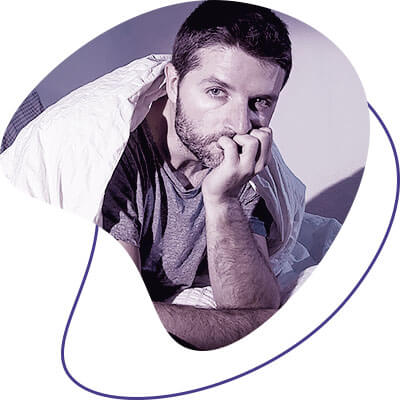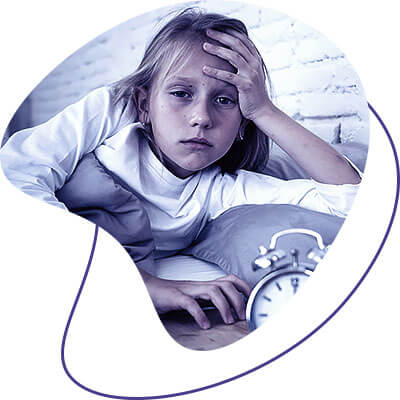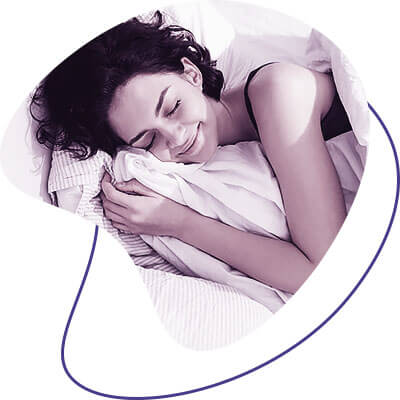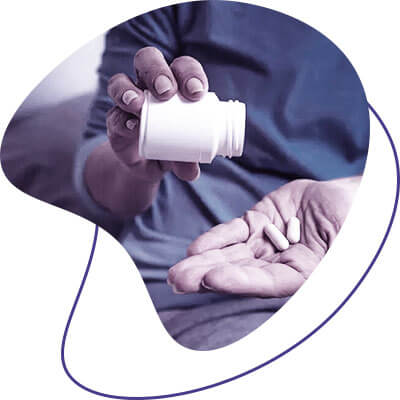Definition of the disease. Causes of the disease
Sleep disorders are a group of illnesses related to disturbances in the quality or structure of sleep. The manifestation of symptoms of these disorders during sleep leads to a worsening of the condition during wakefulness.
The main sleep disorders in adults include:
- Insomnia (insomnia) - difficulty falling asleep and/or maintaining sleep.
- Sleep breathing disorders - snoring and sleep apnoea (most commonly obstructive sleep apnoea syndrome - OSAS).
- Circadian sleep-wake disorders - inability to fall asleep at socially acceptable times due to shifting sleep-wake rhythms.
- Movement disorders in sleep - the need to move the legs before and during sleep (e.g. restless legs syndrome).
- Hypersomnia - severe drowsiness unrelated to poor quality or quantity of sleep at night (narcolepsy and idiopathic hypersomnia are the most common conditions).
- Parasomnias - certain unwanted states, movements, emotions, sensations that occur during falling asleep, during changes in the stages of sleep or during nighttime awakenings: screams, fears, sexual arousal and activity, movements of the hands or head, dreaming, eating, teeth grinding (bruxism), etc.
Short or prolonged sleep is not a disorder, but it can have a serious impact on your health and therefore needs to be corrected.

More than half of the population suffers from some kind of sleep disorder, and the incidence of sleep disorders increases with age. For example, the estimated prevalence of obstructive sleep apnoea syndrome (sleep apnea due to blockage of the oropharynx) among adults aged 30-69 in Russia is 51%. Moderate to severe sleep apnoea occurs in 26% of people. Due to the lack of patient and doctor attention to the symptoms of OSAS, this disorder goes unrecognised in 85-90% of cases. Snoring, which always accompanies the disorder, is noted by 58% of Russians. The prevalence of insomnia is 13-18%, twice as high among women. Circadian disorders account for up to 40% of the causes of insomnia.
Sleep disorders are often combined: one person may have several diseases, for example, obstructive sleep apnoea syndrome and insomnia.
The causes of sleep disorders are numerous. The main causes of insomnia are poor sleep-wake hygiene:
- late bedtime;
- irregular waking hours;
- lack of daylight in the morning and too much artificial light in the evening and at night.
Increased anxiety and depression are factors that lead to chronic insomnia.
Sleep-wake rhythm disturbances can be caused by poor sleep hygiene, shift work and frequent flights, which disturb the synchronisation of internal organs with the main regulator of biological rhythms - light.
Snoring and obstructive sleep apnoea are caused by constriction and blockage of the oropharynx during sleep. The narrowing of the airway is caused by abnormalities of the nose and tonsils, receding or underdevelopment of the lower jaw, increased thickness of the oropharynx in obesity, acromegaly (pituitary dysfunction) and hypothyroidism (lack of thyroid hormones). This may be triggered by alcohol or sleeping pills.
Lack of iron in the body is one of the causes of movement disorders in sleep.
Hypersomnia may be secondary to diseases of the nervous system: brain tumours and injuries, diseases with lesions of the hypothalamus, thalamus and brain stem, stroke, neurodegenerative diseases. Can also occur in mental disorders.
The causes of parasomnias are in most cases unknown. Certain mental illnesses, brain abnormalities and the taking of various medications can provoke this disorder. Stressful situations, lack of sleep, sleep apnea, etc. can also cause parasomnia.
If you notice any similar symptoms, consult your doctor. Do not self-medicate - it is dangerous to your health!
Sleep disturbance symptoms
It is very common to find a combination of several sleep disorders, so it is necessary to clarify all symptoms. The main symptom of sleep disorders is sleepiness or tiredness during the day. But there are other characteristic symptoms by which a specific disorder can be identified.
Insomnia:
- takes more than 30 minutes to fall asleep;
- nocturnal and early-morning awakenings, after which it takes more than 30 minutes to fall asleep.
Sleep breathing disorders:
- snoring;
- respiratory arrest or asphyxiation in sleep.
Circadian sleep-wake rhythm disturbances:
- difficulty falling asleep at a socially acceptable time, more than two hours different from the actual time.
Movement disorders:
- the need to move the legs or walk before going to bed;
- regularly occurring contractions of the muscles of the lower limbs.
Parasomnias:
- various activities and sensations occurring during sleep.
Hypersomnia (narcolepsy):
- daytime episodes of irresistible sleepiness;
- episodes of sudden falling asleep;
- episodes of sudden loss of muscle tone while conscious.
People with sleep disorders may not have active complaints, as the sleeper is not always aware of snoring, sleep apnea or intermittent limb movements. However, the consequences of these and any other sleep disorders are felt in the form of tiredness or drowsiness during the daytime hours.
However, you should be aware that daytime sleepiness can also be a symptom of other illnesses (hypothyroidism, depression, cancer problems), as well as a side effect of certain medications.
Pathogenesis of sleep disorders
Short-term insomnia can be caused by stress. Later on, people with an overactive nervous system begin to worry about difficulties falling asleep and maintaining sleep. They worry about the possible consequences of not getting enough sleep, resulting in poor sleep hygiene. In this case, insomnia becomes chronic.
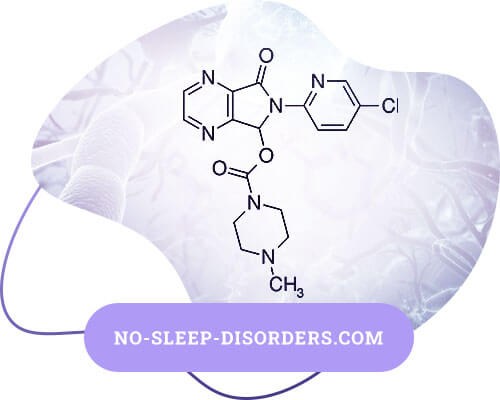
With obstructive sleep apnoea, the upper airways become obstructed and are regularly blocked, making it difficult for oxygen to get to the lungs. An acute lack of oxygen triggers a stress reaction in the body, activates the sympathetic nervous system and increases blood pressure, resulting in micro-awakenings that are not perceptible during sleep. At this point, the brain opens the airways and breathing is restored.
These micro-awakenings disrupt the structure of sleep, reducing the stages of sleep that are important for the body's recovery, resulting in varying degrees of severity of symptoms:
- the person feels drowsy during the day, impaired attention and coordination, irritability and aggressiveness, and sweating during the night hours;
- metabolic disorders may occur, diabetes mellitus may develop and potency may decrease;
- an increase in intrathoracic pressure can strain certain parts of the heart, which can lead to episodes of rapid and slow heartbeat during sleep, pauses in heart activity and the development of life-threatening arrhythmias.
Melatonin, the epiphysis hormone responsible for setting the sleep-wake cycle, plays an important role in the pathogenesis of circadian sleep disturbances. Normally, it is produced only in the evening and night hours. The start time of its secretion (19.30-22.00) determines the onset of biological evening in the body and promotes falling asleep after approx. two hours. Under the influence of light, the start time of melatonin production may shift to later or earlier hours. This leads to difficulty falling asleep at the desired time or early morning awakenings.
Motor sleep disorders occur when the transmission of electrical impulses from neurons to muscle tissue is disrupted, which is associated with a lack of dopamine.
Narcolepsy develops as a result of reduced production of the wakefulness-promoting neurotransmitter orexin A and B. This is due to the development of an autoimmune reaction, i.e. the body itself destroys the brain cells that produce orexin, resulting in a lack of it.
In parasomnias, sleep dissociation occurs, i.e. the person perceives the situation as if it is not happening to them. This condition activates stereotypical motor activity, which results in certain movements during sleep.
Classification and stages of sleep disorders
According to the international classification of sleep disorders, there are the following forms of disorders:
Insomnia has two forms:
- acute - lasting up to three months;
- chronic - lasting more than three months.
Sleep apnoea is divided into three groups according to the type of sleep apnoea:
- obstructive sleep apnoea syndrome - sleep apnoea is a respiratory arrest due to blockage of the oropharynx, in which chest movements are preserved but there is no nasal breathing;
- central sleep apnoea syndrome - absence of chest movement and nasal breathing;
- mixed sleep apnoea - no nasal breathing and no chest movement at first, later on movement appears.
There are also separate symptoms - snoring and cataphrenia (sleep moaning).
Sleep apnea is assessed if it lasts more than 10 seconds. Depending on the severity of the interruption, apnoea and hypopnoea are classified as complete apnoea and hypopnoea.
Degrees of severity of sleep apnea:
- mild - 5-14.9 episodes of apnoea-hypopnoea per hour of sleep;
- medium - 15-29.9 episodes of apnoea-hypopnoea per hour of sleep;
- severe - more than 30 episodes of apnoea-hypopnoea per hour of sleep.
Circadian sleep-wake rhythm disturbances are divided into two categories according to their causes:
- Endogenous (internal causes):
- delayed sleep-wake rhythm syndrome;
- sleep-wake rhythm anticipation syndrome;
- irregular sleep-wake rhythm.
- Exogenous (external causes):
- shift-work insomnia;
- jet-lag (sleep disturbance when changing time zones).
Movement disorders in sleep:
- periodic leg movement syndrome and disease;
- restless legs syndrome.
Hypersomnia:
- Narcolepsy:
- narcolepsy type 1;
- narcolepsy type 2.
- idiopathic hypersomnia - unexplained episodes of sleepiness occurring during the day;
- kleine-Levin syndrome (sleeping beauty syndrome) - a sleep disorder in which a person may sleep for up to 18 hours a night or more.
Parasomnias are distinguished according to the stage at which sleep disturbances occur:
- Parasomnias associated with slow sleep:
- confusional waking - waking with confusion;
- sleepwalking (somnambulism);
- night terrors (fears);
- eating while asleep syndrome.
- Parasomnias associated with REM sleep:
- rapid sleep behaviour disorder syndrome;
- sleep paralysis - inability to move or speak during sleep despite being conscious or semi-conscious;
- nightmares.
- Other parasomnias:
- exploding head syndrome - sudden, loud noise in the ears during sleep or falling asleep;
- sleep hallucinations;
- enuresis.
Complications of sleep disorders
A sleep-deprived person cannot enjoy life to the full. Fatigue, impaired attention, coordination and memory, drowsiness and irritability are common consequences of sleep disorders.
The duration of sleep and its quality are important. Thus, even habitually short sleep (less than 6 hours) has a negative effect on health, compared to normal sleep (7-8 hours).
Prolonged episodes of short sleep and a disturbance in the quality of sleep lead to serious physical and mental health problems, up to and including suicidal thoughts. The risk of developing the following diseases increases:
- Arterial hypertension/hypertension - persistent increase in blood pressure due to activation of the sympathetic nervous system.
- Obesity due to decreased levels of the hormone leptin (which regulates energy metabolism) and increased levels of the hormone ghrelin (which stimulates food intake). Hormonal disruption leads to changes in eating habits: decreased satiety, increased appetite, craving for fatty foods and rapidly digestible carbohydrates.
- Metabolic syndrome and type 2 diabetes.
- Colorectal cancer.
- Depression.
- Reduced sex drive due to decreased sex hormones.
- Frequent colds.
- Deterioration of the skin due to reduced production of collagen and somatotropic hormone (which regulates human growth and development).
Circadian sleep disorders besides the above mentioned disorders often result in gastrointestinal disorders: more frequent or slower stool frequency associated with desynchronisation of internal organs and disturbed digestion.
The most severe health effects occur with obstructive sleep apnoea syndrome:
- Arterial and resistant hypertension may develop, requiring three or more hypotensive medications.
- There is a risk of bradyarrhythmia in sleep (slowing of the heart rate to below 60 beats per minute). If OSAS is not diagnosed in time, a permanent pacemaker may need to be fitted.
- There is an increased risk of stroke and death, including death from cardiovascular disease.
In addition, there are other negative consequences, for example, OSAS sufferers are more likely to get divorced.
During episodes of sudden drowsiness with hypersomnia, there is an increased likelihood of injuries and traffic accidents. High levels of drowsiness make it difficult or time-consuming to engage in professional activities.
With parasomnias, the risk of self-harm is high, as well as damage to a partner.
Diagnosing sleep disorders
The diagnosis of sleep disorders is made on the basis of interviews, physical examinations, instrumental and laboratory tests.
For the diagnosis of insomnia, it is sufficient to report difficulties falling asleep, waking up early or at night and difficulty falling asleep, and a deterioration in performance during the day. However, further investigations may be necessary to exclude other sleep disturbances that lead to insomnia symptoms. Polysomnography is used to diagnose OSAS, periodic limb movement syndrome, parasomnias and all major sleep disorders. Circadian sleep-wake disorders are detected by actigraphy.
Polysomnography is the best way to diagnose major sleep disorders, a study that allows for the evaluation of changes that occur during sleep. It is the only examination method that can record an encephalogram, simultaneously assess the stages of sleep, sleep breathing, the relationship of different events (snoring, respiratory arrest, leg movements, masticatory muscles, body position and electrocardiogram) with the stages of sleep and awakenings. However, the complexity of setting up and analysing the study, the need to be in a separate room, and the cost of equipment and performing the diagnosis limit its use.
An actigraphy is a method of evaluating the main characteristics of sleep and sleep-wake rhythm over a long period of one to four weeks. This method makes it possible to assess the stability of the sleep rhythm, e.g. changes in the time to fall asleep and wake up at the weekend, the sleep rhythm in shift work. It is used for insomnia and circadian sleep disorders. The actigraphograph is a compact device about the size of a wristwatch, which is worn on the wrist and uses an accelerometer to assess motor activity and light.
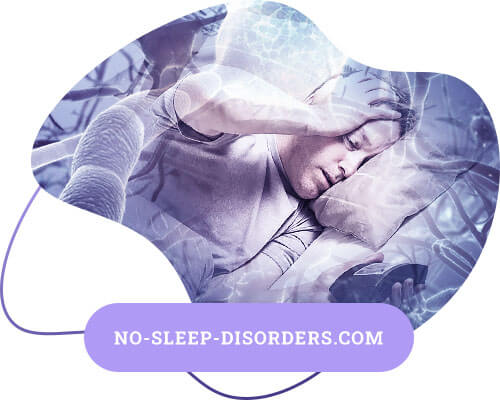
When diagnosing obstructive sleep apnoea, we look for pathologies of the ENT organs: enlarged tonsils, chronic rhinitis, thickened tongue. The airway lumen is assessed using the Mallampati scale, when the patient opens their mouth and sticks out their tongue. If the back of the pharynx and tonsils are not visible in this position, respiratory problems due to blockage of the oropharyngeal lumen by the root of the tongue are likely. Surgical treatment of ENT pathology in this case will be ineffective. Neck circumference, an important prognostic parameter for obstructive sleep apnoea, is assessed. Its risk significantly increases with a neck circumference greater than 43 cm in men and greater than 41 cm in women.
The most accurate method for diagnosing OSAS is polysomnography, but in the Russian guidelines, computer pulse oximetry or respiratory monitoring is more often mentioned to determine obstructive sleep apnoea in various diseases.
Cardiorespiratory monitoring is a method of assessing sleep breathing disorders in an outpatient setting, where some of the sensors are placed on the chest in the outpatient clinic and the rest are placed independently by the patient during sleep: in the nasal passages to record nasal breathing and on the finger of the hand to assess blood haemoglobin oxygen saturation. Sensors on the chest record the electrocardiogram in addition to the movements of the chest and allow you to assess the impact of sleep breathing disorders on heart rhythm and their relationship to arrhythmias.
Computerised pulse oximetry is a simple method of investigation, in which a pulse oximetry sensor is placed on the finger of the hand. Another screening tool to assess breathing is the recording of a rheopnevogram on a Holter electrocardiogram. This records chest movements from the ECG sensors. If the pulse oximeter or rheopneumogram shows abnormalities, a more complete examination is necessary to make a diagnosis.
It is worth suspecting OSAS if a diurnal blood pressure monitor shows an abnormal blood pressure rhythm - no drop in blood pressure or an increase during the night hours.
If there is high daytime sleepiness, the patient is assessed by a multiple sleep test to exclude narcolepsy. After the polysomnography, all sensors are kept on the patient and the patient is allowed to fall asleep for 20 minutes every two hours during the day.
Questionnaires assessing the main symptoms are additionally used to diagnose sleep disturbances:
- The Pittsburgh questionnaire assesses sleep quality and includes symptoms of major sleep disorders over the past month.
- The Berlin questionnaire and the STOP-BANG questionnaire are used to assess the risk of OSAS.
- The Epworth Daytime Sleepiness Scale assesses the severity of sleepiness in different situations.
- The Munich Chronotype Assessment Scale identifies the duration and timing of sleep on weekdays and weekends, and determines the severity of social jet lag.
Treatment of sleep disorders
The treatment of sleep disorders depends on the sleeping disorder.
The main treatment for chronic insomnia is cognitive behavioural therapy - correction of sleeping behaviour and attitudes. The standard treatment regimen consists of six sessions, requiring the completion of a sleep diary and/or the use of actigraphy to assess sleep duration and pattern.
Sleeping pills can be used to treat insomnia for short periods of time, which speeds up falling asleep, reduces nocturnal awakenings and increases sleep duration. However, it should be noted that sleep apnea is a restriction, or in some cases a contraindication, to taking most sleeping pills. This is because the drugs relax the muscles of the soft palate and the walls of the pharynx, which leads to blockage of the airways and exacerbates breathing problems. Delayed-release melatonin preparations are used in patients over 55 years of age.
In the treatment of obstructive sleep apnoea, it is recommended to stop smoking and drinking alcohol, reduce weight (reduces the severity of OSAS by 20-25%), and treat chronic ENT diseases. The main method of treatment of moderate and severe OSAS, especially in combination with cardiovascular pathology, is noninvasive ventilation in continuous positive pressure mode (CPAP therapy). This is done with the help of a CPAP machine. It is a small compressor that delivers a constant stream of pressurised air through a flexible tube and a sealed nasal mask. This air flow prevents the airways from closing and blocking the flow of oxygen. The device is used every night. The device records all readings on a memory card, which is available to the patient. The doctor sees more detailed information after downloading the data using special software.
Intraoral appliances (mouth guards) made by orthodontists are also used in the treatment of OSAS. The mouth guards are put in place while the patient sleeps and extend the lower jaw by 6-10 mm.
Surgical treatment by an ENT surgeon may be applied in the case of pathology of the ENT organs. Operations on individual structures, e.g. removal of the uvula or tonsils, have not proven effective. Comprehensive surgery, where nasal breathing is restored and oropharyngeal structures are repaired, is the best option.
If OSAS is associated with body posture, it is advisable not to lie on your back (this is the most common position for breathing problems). A tennis ball can be used and placed in a pocket sewn on a T-shirt between the shoulder blades to prevent lying on the back. If nasal breathing is preserved, Provent disposable nasal stickers can be used, they reduce the severity of OSAS by about half.
Intermittent limb movement syndrome is treated by a neurologist. When ferritin levels are less than 75 µmol/l, iron preparations are used and avoiding tea, coffee and other stimulant drinks is recommended. If ferritin levels are normal, special drugs are prescribed by a neurologist.
Circadian sleep-wake rhythm disorders require, above all, a change in sleep hygiene. If possible, it is worth avoiding shift work and frequent flights or optimising work schedules. The circadian system can be adjusted by changing the intensity and timing of light, which can be achieved with different approaches.
- To shift the circadian rhythms to earlier hours, bright light should be used when waking up and less light in the evening. In the evening, melatonin preparations are used 4-6 hours before bedtime. Melatonin in the form of medication taken before the onset of own melatonin secretion adjusts the internal biological rhythms to the earlier hours of falling asleep.
- If it is necessary to shift the sleep-wake rhythm to a later time, bright lights in the evening and melatonin during the day are used. There are special calculators for calculating the timing and duration of melatonin intake, the time of supplementary lighting for rapid adaptation and the prevention of the development of circadian disturbances during flights.
- In addition, it is important to modify other factors that significantly influence internal biological rhythms: the timing of physical activity and food intake.
For parasomnias that manifest as nightmares, a psychologist's consultation and image repetition therapy are effective. Drug therapy for parasomnias includes the use of:
- clonazepam, imipramine, paroxetine or melatonin for somnambulism;
- antidepressants or benzodiazepines used for nightmares;
- topiramate or selective serotonin reuptake inhibitors (SSRI) for nighttime eating disorders;
- clonazepam is used in the treatment of parasomnia occurring during REM sleep;
- in sleep paralysis, antidepressants from the SSRI group are used.
The treatment of hypersomnia in Russia is limited by current legislation, as suitable drugs are listed as narcotic and psychotropic drugs (e.g. modafinil).
Prognosis. Prevention
For the prevention of sleep disorders, recommendations should be followed:
- adhere to a sleep-wake pattern;
- adults get at least 7 hours of sleep a night;
- observe lighting regime;
- give up smoking and alcohol intake;
- treat pathologies of ENT organs promptly;
- control their weight;
- exercise regularly;
- only take sleeping pills as prescribed by your doctor.
In parasomnias, you should not sleep on the first floor of a bunk bed to prevent self-harm. Sharp objects and furniture near the bed should be removed, a mattress should be placed on the floor, and persons with somnambulism should not sleep near a window. If there are medication triggers, they should be avoided.
Experiments to increase sleep duration by 30-60 minutes (by going to bed earlier and/or waking later) have been shown to result in positive health effects: reduction in weight and blood pressure, decreased appetite and tendency to snack, increased capacity for work.
If insomnia is not treated, the serious health consequences described above occur. The mainstay of insomnia treatment is cognitive behavioural therapy, which can cure insomnia in six sessions and has a longer lasting effect than taking sleeping pills. Relapses can occur if sleep disturbances are repeated, other sleep disturbances are not detected, or if concomitant anxiety and depression are not treated. Taking sleeping pills for the treatment of insomnia without a change in lifestyle (correction of sleep hygiene, light regime and physical activity) is likely to lead to a return of insomnia after withdrawal of sleeping pills.
Timely surgical treatment of ENT pathology can prevent the negative health consequences of obstructive sleep apnoea. When moderate to severe OSAS is diagnosed, only weight reduction and CPAP therapy have been shown to significantly reduce the risk of severe cardiovascular events (heart attack and stroke). If the factors leading to OSAS are left untreated, CPAP therapy is given for a long time, sometimes for life.
Circadian sleep-wake rhythm disturbances due to internal rhythm shifts take longer to treat than disturbances due to external factors. For example, melatonin administration for insomnia in shift work is only necessary after the shift and may not be required on other days. The use of light therapy may be necessary more during winter hours, while during summer hours natural light is sufficient.
Movement disorders during sleep are effectively treated with iron preparations or dopamine agonists.
Parasomnias can also be treated in the absence of triggering factors, withdrawal of parasomnia-promoting medication, treatment of concomitant sleep disorders (e.g. obstructive sleep apnoea syndrome) and good sleep hygiene.
The main drugs used to treat narcolepsy are banned in Russia, so treatment is difficult and the prognosis is unfavourable. Narcolepsy sufferers may fall asleep at any time, for example while driving a car. However, increasing the length of sleep, reducing triggers and planning activities will help to reduce hypersomnia sleepiness.
By: Dr. Chloe Mura


